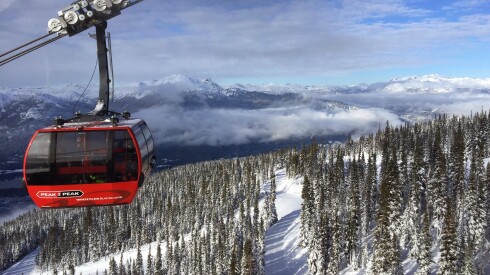When you think of California’s Death Valley, you may think of an unforgiving desert—one with the hottest recorded temperature on earth. Surely not much can grow in such a harsh environment, right?
Well, not exactly.
Death Valley’s average rainfall has been about 2.6 inches per year since such data has been recorded (compared with California’s average of 14.8 inches per year). But thanks to this year’s powerful El Niño weather system, Death Valley has already seen almost 2.38 inches of rainfall in 2024, according to the National Oceanic and Atmospheric Administration. The result? A blanket of beautiful wildflowers.
Not a super bloom, but still above average
According to the National Park Service, Death Valley will not have a super bloom in 2024. Super blooms occur when a high concentration of wildflower seeds that have been dormant for a few years because of inadequate rainfall bloom to life after an unusually heavy rain season. This rare occurrence happened most recently in 2016—and before that, in 2005.
But that doesn’t mean no flowers for the desert park. Although the region didn’t have the exact conditions needed to create a super bloom, it is still expected to have a bountiful and beautiful wildflower season this year, helped by the precipitation this winter. Considering that springtime blooms can sometimes be sparse in the harsh desert environment, even this amount of color is special enough to warrant a visit.
Where to see wildflowers in Death Valley

A desert fivespot (Eremalche rotundifolia) is one of the many flowers to see in Death Valley.
Photo Courtesy of The National Park Service
Given the variety of elevations within the park, the best spots for wildflowers depend on when you visit. Desert wildflowers at lower elevations—including the valley floor—will begin to appear in mid-February and last until mid-April. At higher elevations, above 5,000 feet, visitors will typically see flowers well into June and July.
“The most impressive are the blooms at low elevation, because of the contrast between rocks and the flowers,” says Abby Wines, a spokesperson for the park. “By far the most numerous flower during a super bloom is the desert gold, which looks like a gold daisy, so there will be big fields of yellow.” Other flowers include the fragile white gravel ghost, sand verbena, and purple phacelia.
In 2023, which was also an above-average year for flowers in the park, some of the best blooms were found at Daylight Pass Road, North Highway, Big Pine Road, and Emigrant Canyon Road.
Wherever you go, make sure to tread carefully and stay on the trail, and do not pick flowers. These ecosystems are vibrant yet fragile. Leaving them alone will help ensure that these beautiful blossoms can continue to thrive and color the desert for years to come.
How to visit Death Valley

The Oasis at Death Valley is one of the best hotels to book for a trip to the national park.
Photo by Xanterra Travel Collection
Death Valley is about a two-hour drive from Las Vegas or a four-and-a-half-hour drive from Los Angeles. If you choose to go, stay at The Oasis at Death Valley, a refuge in the middle of the desert. The concierge can recommend the best places in the valley to check out the wildflowers, as well as give you a guide for which flowers to look out for and when.
Catch the peak of the wildflower blooms now through the beginning of April, when the wildflowers start to disappear due to higher temperatures and drier conditions. You can track where the blooms are appearing—and disappearing—with this map from the NPS.











